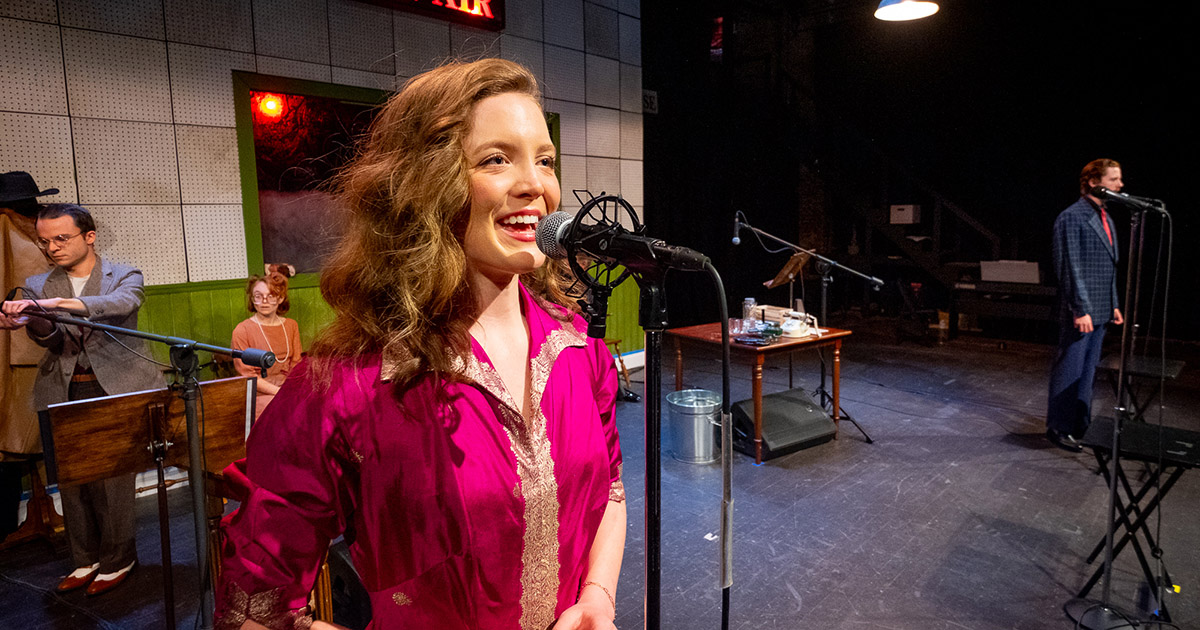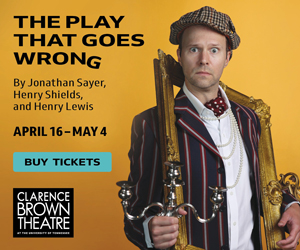One of the most interesting ironies of the American cinema is that the now-classic holiday television vehicle, the 1946 Frank Capra film, It’s A Wonderful Life, was not initially successful, either financially or critically, despite its director and its star, James Stewart. While it was nominated for five Academy Awards, it failed to win any; critics in the post-war years were generally complimentary, but found it too “simple-minded” and overly sentimental. Falling into Hollywood’s version of obscurity, the film languished and its copyright was eventually allowed to expire in 1974, an event that ironically set the stage in the 1980s for its subsequent television appearances and belated popularity.
Interestingly, the film’s stars, Stewart and Donna Reed, performed several radio drama adaptations of the script in 1947, first on the Lux Radio Theater, then later on the Screen Guild Theater. Had we been in that radio studio watching the drama being brought to life, we might have experienced something akin to the current River & Rail Theatre Company production, It’s a Wonderful Life: A Live Radio Play. Adapted by Joe Landry and based on the film’s original inspiration, the short story The Greatest Gift by Philip Van Doren, this version offers the premise that its audience is the audience in a 1940s radio studio in which actors are delivering a scripted version of the popular film. The River & Rail production is clearly popular—this is its second year of a holiday run.

Although the storyline is now quite familiar to audiences, it is the play’s layered approach that pleasantly challenges audiences and makes this production so charming: actors portraying actors who are themselves performing a script. Equally charming are the mechanics of a live production portraying a live production, including that of the radio studio and its mandatory “Applause” and “On Air” signs, microphones, control booth, and the materials for a plethora of necessary sound effects that range from telephones to breaking glass. Directed by Scott Baron, the production features five actors portraying all of characters, plus creating the sound effects. Radio actors “Jake Laurents” (Guthrie Butler) and “Sally Applewhite” (Amara Pappas) take the lead roles of younger and older George Bailey and Mary Hatch Bailey, respectively. The other three radio actors, “Lana Sherwood” (Celeste Pelletier), “Harry ‘Jazzbo’ Heywood” (Brady Craddock), and studio announcer “Freddie Filmore” (Christopher Pelant), take all of the remaining roles.

Of course, it is worth noting that the performances of the five go well beyond “voice” acting, as they are required to simultaneously appear as radio actors of 1940s. Butler had a bit of Jimmy Stewart in his portrayal which made the impression quite accessible. Pappas was marvelous in finding the right dramatic balance for Mary Bailey that floated cleverly between sympathetic role portrayal and talented professional actor.
Pelletier was tasked with a huge range of roles to portray, from six-year old Zuzu Bailey (and the other Bailey children) to a delicious take on the flirtatious Violet Bick and a comically screeching Mrs. Hatch. Craddock (as “Jazzbo” Heywood) was sensational in his roles, dancing through the gamut from angel Clarence Oddbody to Sam Wainwright and bar owner Martini. Pelant not only was the studio announcer, but had the big roles of Uncle Billy, pharmacist Mr. Gower, and the evil Mr. Potter.
Although the audience for River and Rail’s It’s A Wonderful Life: A Live Radio Play may not have realized it, they were witnessing a clever demonstration of what theatre is all about. The classic familiar story is the base for assembling the narrative from a different and refreshing angle. While it will be virtually impossible to avoid the Capra film this holiday season, adventurous theatre-goers will want to add the refreshing perspective of this marvelous production to their holiday experience.
*****Recommended
River & Rail Theatre Company
at Old City Performing Arts Center, 111 State Street
Through December 22
Tickets







